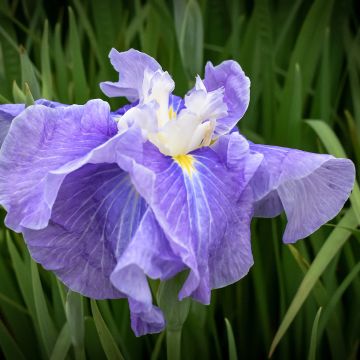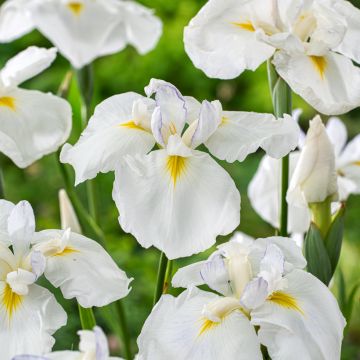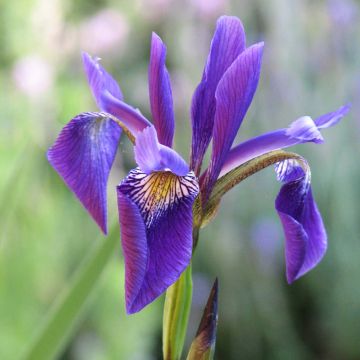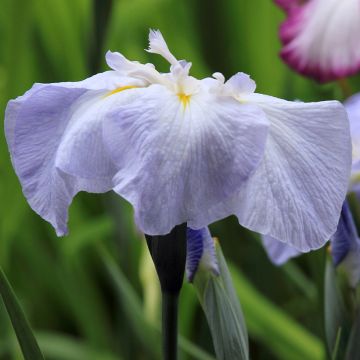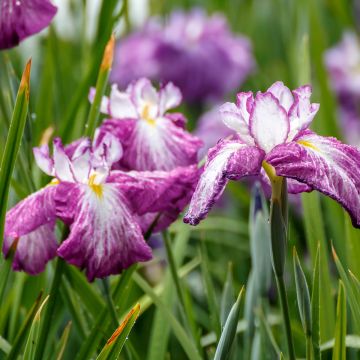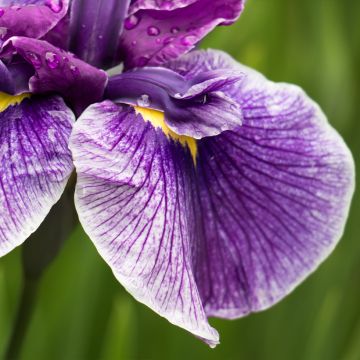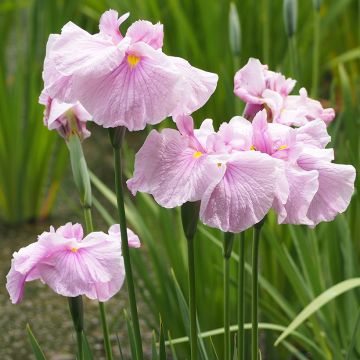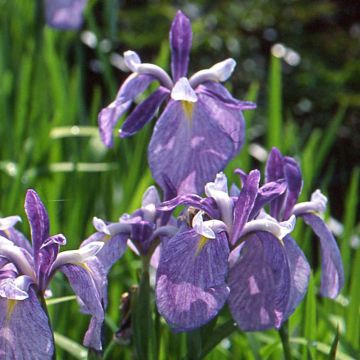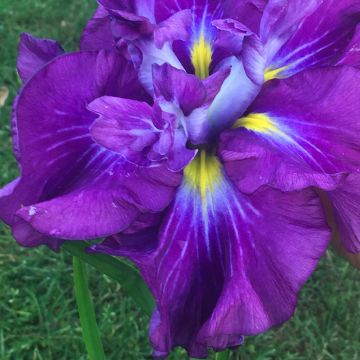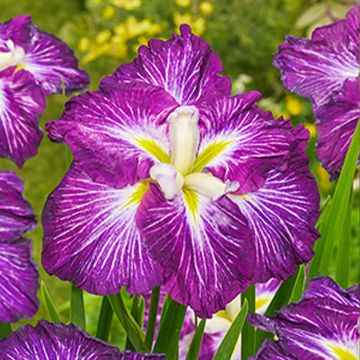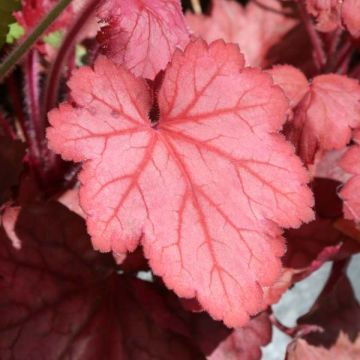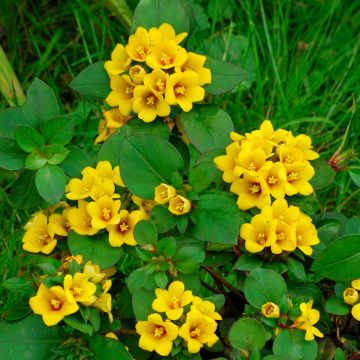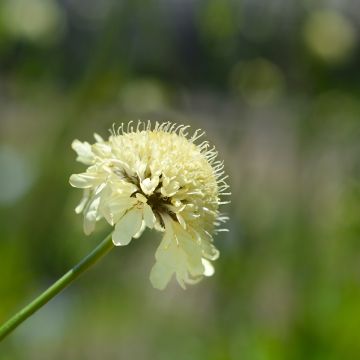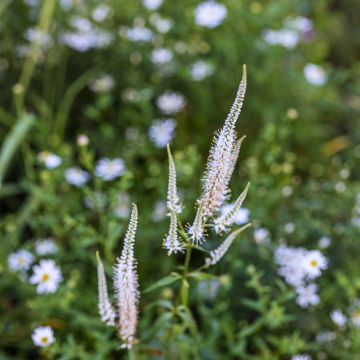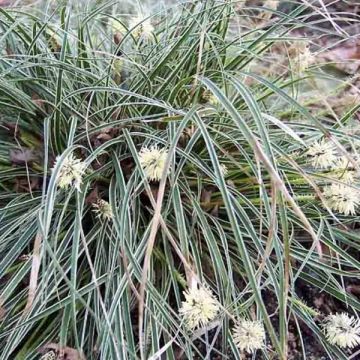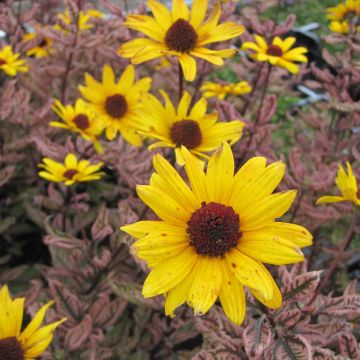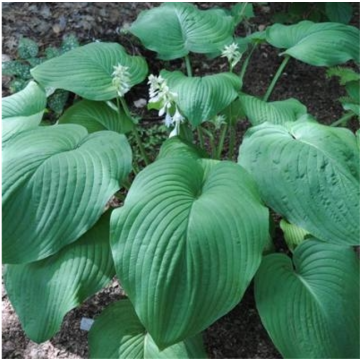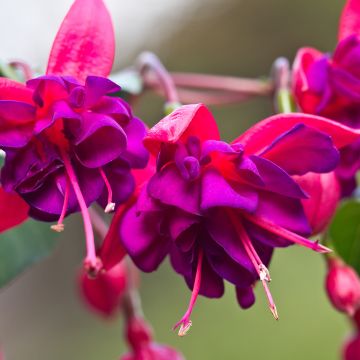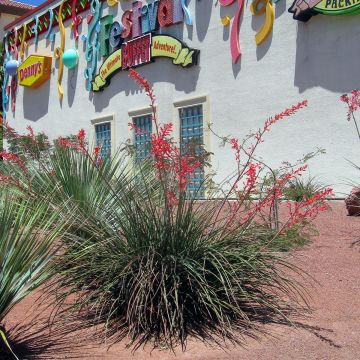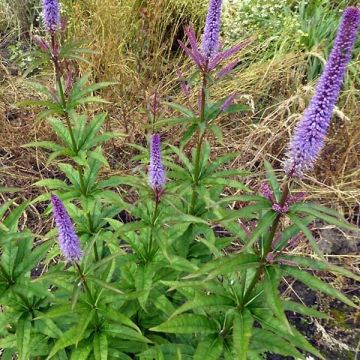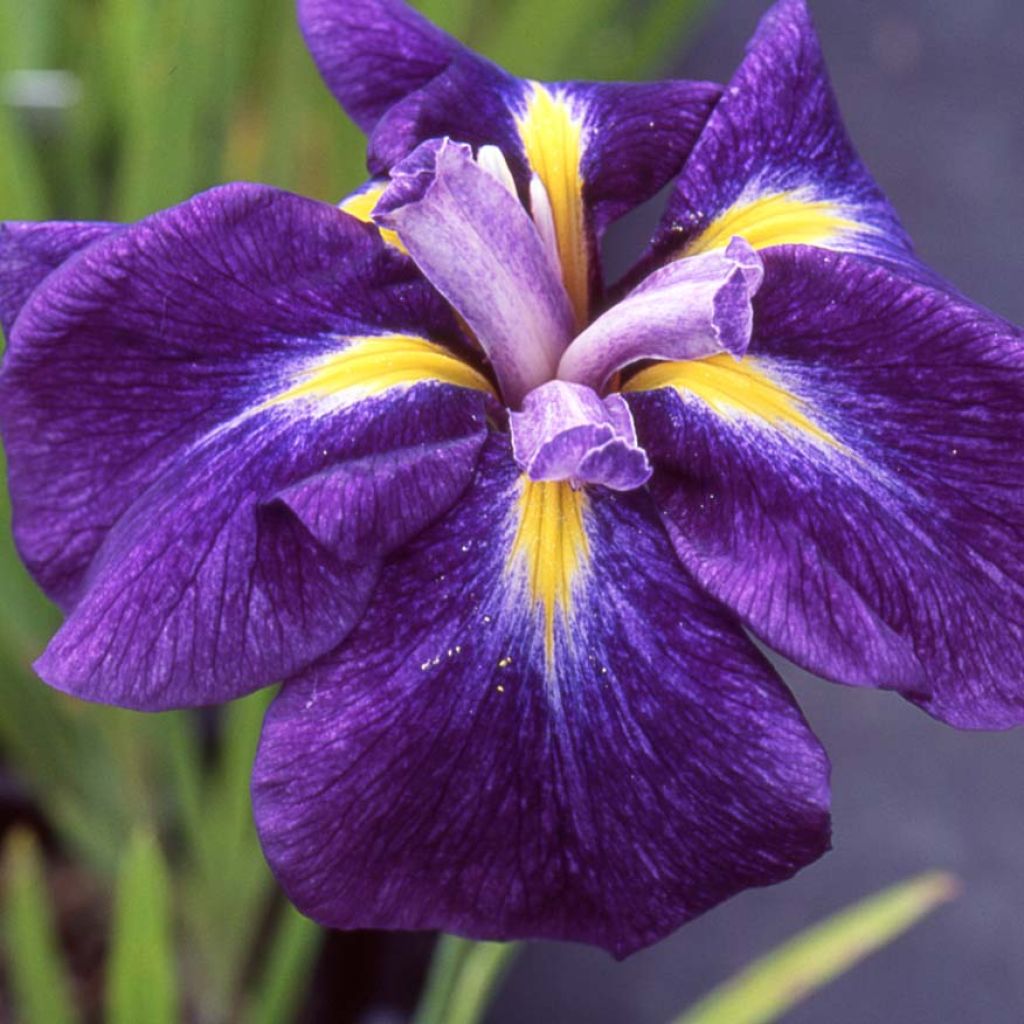

Iris ensata Iedo Mishiski - Japanese Water Iris
Iris ensata Iedo Mishiski - Japanese Water Iris
Iris ensata Iedo Mishiski
Japanese Water Iris, Sword-leaved Iris, Butterfly Iris
I have received the young iris plant and I am pleased with my purchase. The pot was a bit shaken by the courier, but the plant is in good condition. I haven't planted it in the garden yet, as it still freezes in the morning here.
Maya, 19/02/2021
This plant carries a 12 months recovery warranty
More information
We guarantee the quality of our plants for a full growing cycle, and will replace at our expense any plant that fails to recover under normal climatic and planting conditions.
From €5.90 for pickup delivery and €6.90 for home delivery
Express home delivery from €8.90.

Does this plant fit my garden?
Set up your Plantfit profile →
Description
Iris ensata 'Iedo Mishiski' is a prince of acidic and humid lands in summer: from a beautiful clump of grass-like foliage emerge floral stems adorned with large round and open flowers that lie flat, of a vivid blue-violet and velvety colour, traversed by very dark veins and animated by a superb elongated spot, of a bright yellow marginated with white, very visible at the base of each sepal. Antipodal to our garden Iris, this rhizomatous plant thrives on the banks of water points, but also in heavy soils that remain cool in summer.
Iris ensata (synonym kaempferi), known in Japanese as hanashōbu, more commonly referred to as Japanese water iris, have nothing in common with our classic garden irises, except for their belonging to the Iridaceae family. The original Iris ensata is a fibrous rhizome plant native to Asia, specifically from the wetlands of Japan, the Himalayas, and Siberia. These irises, known to be difficult to cultivate, love acidic and peaty soils (do not tolerate excess limestone), are thirsty for water during their period of growth and flowering, but appreciate slightly less humid soils in winter: they are found in nature growing above the water level, which often decreases in winter and rises again in spring with the melting of snow.
The cultivar 'Iedo Mishiski' forms an erect, rather upright clump, reaching a height of 90cm (35in) when in bloom with a spread of 50 to 60cm (20 to 24in). The plant slowly spreads on the ground through its rhizomes, beautifying year after year. The deciduous foliage, of medium green colour, is composed of long and slender ribbon-like leaves, sheathing at the base, marked by a prominent central vein. The flowering takes place between June and August depending on the climate, lasting for 3 weeks. Floral stems emerge from the clumps of leaves. Each stem carries 2 to 3 very large flowers with a diameter of 12-15cm (5-6in). They consist of 3 large rounded and flattened sepals, topped by 3 wide flattened petals. The centre of the flower is occupied by 3 small petaloid styles, mauve infused with white.
Often cultivated on the banks of ponds and basins, Iris ensata, like many marsh plants, can live with their "feet" in water during summer, but their rhizomes do not tolerate being submerged during winter, especially if it is freezing. In our gardens, these Iris ensata will thrive in a loamy soil enriched with compost, but not drying out in summer. For example, plant them in a heavy soil forming a slight depression, at the bottom of a slope, or on a bank where the soil becomes moist through capillarity. Associate Iris ensata 'Iedo Mishiski' with Anemone rivularis, Daylilies, Darmera peltata, Lobelia 'Queen Victoria', Astilbes, Physostegia virginiana, loosestrifes, and Ligularias.
Excellent cut flowers, especially in ikebana, Iris ensata were once extensively cultivated in Japan for this purpose, especially around Edo (the ancestor of Tokyo).
Report an error about the product description
Iris ensata Iedo Mishiski - Japanese Water Iris in pictures
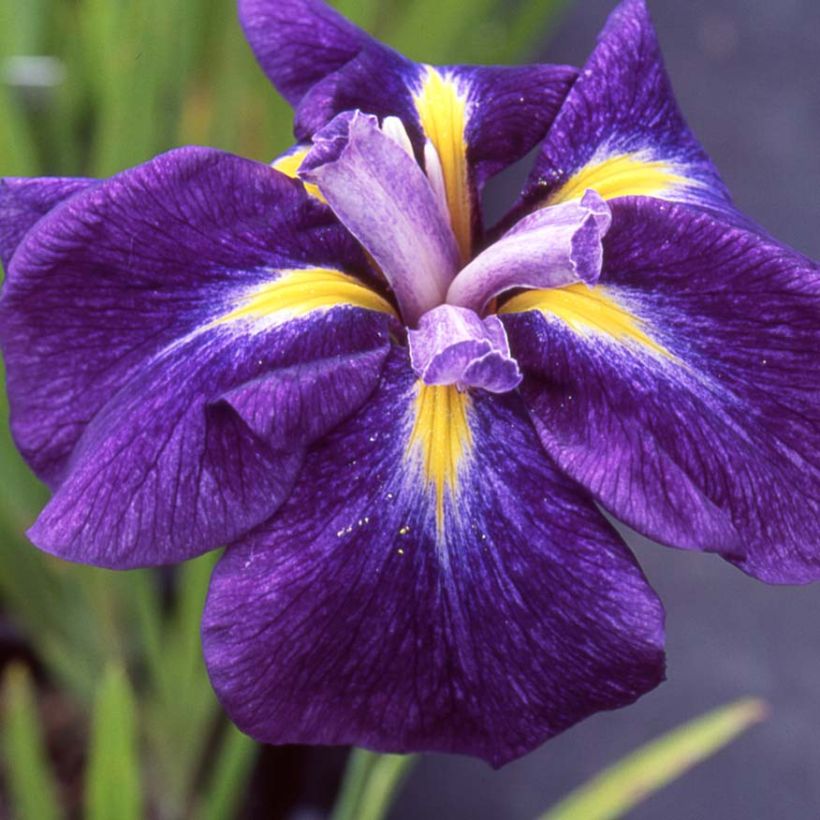

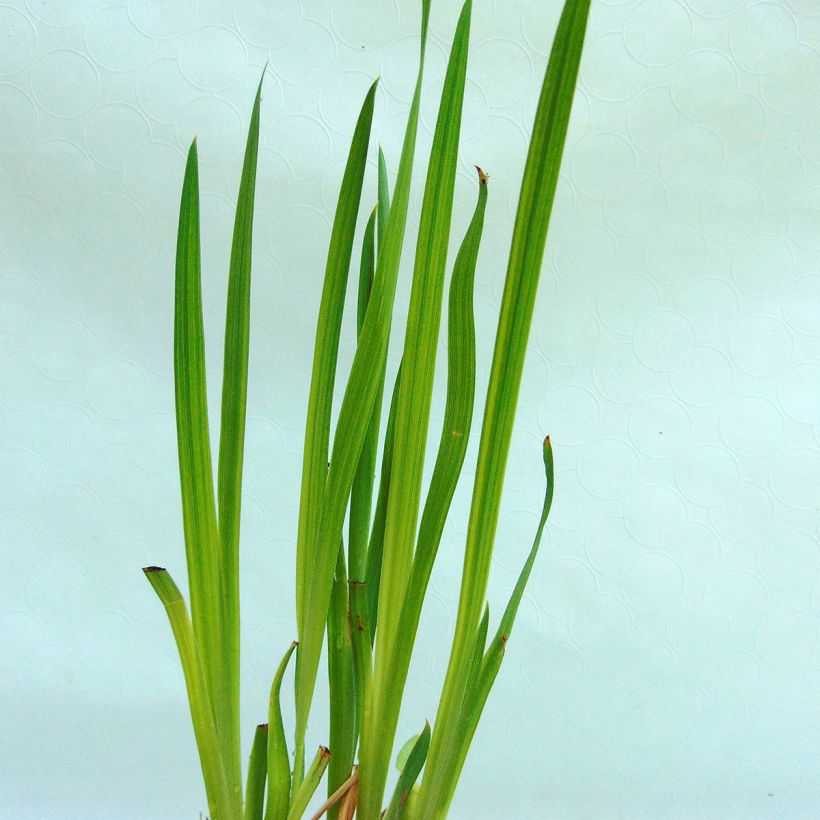

Flowering
Foliage
Plant habit
Botanical data
Iris
ensata
Iedo Mishiski
Iridaceae
Japanese Water Iris, Sword-leaved Iris, Butterfly Iris
Cultivar or hybrid
Other Japanese Iris
Planting and care
Iris ensata like damp, boggy, peaty soil without lime. They also like cool soil, even if it's not soggy, as long as it doesn't dry out in summer. On the other hand, they prefer fairly dry soil in winter. We set them up near an artificial stream where the water level is kept high during the summer. In winter, we let the water level drop by around 15cm (6in), so that the stumps are above the water, as in nature where the river level drops in winter and then rises again in spring with the melting of the snow. Their resistance to cold is excellent down to around -18° (-0.4°F). This resistance is even greater if the soil is dry.
Planting period
Intended location
Care
-
, onOrder confirmed
Reply from on Promesse de fleurs
Summer flowering perennials
Haven't found what you were looking for?
Hardiness is the lowest winter temperature a plant can endure without suffering serious damage or even dying. However, hardiness is affected by location (a sheltered area, such as a patio), protection (winter cover) and soil type (hardiness is improved by well-drained soil).

Photo Sharing Terms & Conditions
In order to encourage gardeners to interact and share their experiences, Promesse de fleurs offers various media enabling content to be uploaded onto its Site - in particular via the ‘Photo sharing’ module.
The User agrees to refrain from:
- Posting any content that is illegal, prejudicial, insulting, racist, inciteful to hatred, revisionist, contrary to public decency, that infringes on privacy or on the privacy rights of third parties, in particular the publicity rights of persons and goods, intellectual property rights, or the right to privacy.
- Submitting content on behalf of a third party;
- Impersonate the identity of a third party and/or publish any personal information about a third party;
In general, the User undertakes to refrain from any unethical behaviour.
All Content (in particular text, comments, files, images, photos, videos, creative works, etc.), which may be subject to property or intellectual property rights, image or other private rights, shall remain the property of the User, subject to the limited rights granted by the terms of the licence granted by Promesse de fleurs as stated below. Users are at liberty to publish or not to publish such Content on the Site, notably via the ‘Photo Sharing’ facility, and accept that this Content shall be made public and freely accessible, notably on the Internet.
Users further acknowledge, undertake to have ,and guarantee that they hold all necessary rights and permissions to publish such material on the Site, in particular with regard to the legislation in force pertaining to any privacy, property, intellectual property, image, or contractual rights, or rights of any other nature. By publishing such Content on the Site, Users acknowledge accepting full liability as publishers of the Content within the meaning of the law, and grant Promesse de fleurs, free of charge, an inclusive, worldwide licence for the said Content for the entire duration of its publication, including all reproduction, representation, up/downloading, displaying, performing, transmission, and storage rights.
Users also grant permission for their name to be linked to the Content and accept that this link may not always be made available.
By engaging in posting material, Users consent to their Content becoming automatically accessible on the Internet, in particular on other sites and/or blogs and/or web pages of the Promesse de fleurs site, including in particular social pages and the Promesse de fleurs catalogue.
Users may secure the removal of entrusted content free of charge by issuing a simple request via our contact form.
The flowering period indicated on our website applies to countries and regions located in USDA zone 8 (France, the United Kingdom, Ireland, the Netherlands, etc.)
It will vary according to where you live:
- In zones 9 to 10 (Italy, Spain, Greece, etc.), flowering will occur about 2 to 4 weeks earlier.
- In zones 6 to 7 (Germany, Poland, Slovenia, and lower mountainous regions), flowering will be delayed by 2 to 3 weeks.
- In zone 5 (Central Europe, Scandinavia), blooming will be delayed by 3 to 5 weeks.
In temperate climates, pruning of spring-flowering shrubs (forsythia, spireas, etc.) should be done just after flowering.
Pruning of summer-flowering shrubs (Indian Lilac, Perovskia, etc.) can be done in winter or spring.
In cold regions as well as with frost-sensitive plants, avoid pruning too early when severe frosts may still occur.
The planting period indicated on our website applies to countries and regions located in USDA zone 8 (France, United Kingdom, Ireland, Netherlands).
It will vary according to where you live:
- In Mediterranean zones (Marseille, Madrid, Milan, etc.), autumn and winter are the best planting periods.
- In continental zones (Strasbourg, Munich, Vienna, etc.), delay planting by 2 to 3 weeks in spring and bring it forward by 2 to 4 weeks in autumn.
- In mountainous regions (the Alps, Pyrenees, Carpathians, etc.), it is best to plant in late spring (May-June) or late summer (August-September).
The harvesting period indicated on our website applies to countries and regions in USDA zone 8 (France, England, Ireland, the Netherlands).
In colder areas (Scandinavia, Poland, Austria...) fruit and vegetable harvests are likely to be delayed by 3-4 weeks.
In warmer areas (Italy, Spain, Greece, etc.), harvesting will probably take place earlier, depending on weather conditions.
The sowing periods indicated on our website apply to countries and regions within USDA Zone 8 (France, UK, Ireland, Netherlands).
In colder areas (Scandinavia, Poland, Austria...), delay any outdoor sowing by 3-4 weeks, or sow under glass.
In warmer climes (Italy, Spain, Greece, etc.), bring outdoor sowing forward by a few weeks.

































